Oct 23, 2018 | CCAC, CFA, coin design, commemorative, commentary
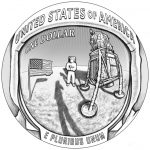
Reverse of the Apollo 11 50th Anniversary Commemorative Coin
It looks like these two groups that are supposed to be the gatekeepers of the design of U.S. coinage did not fully think through their design selection for the Apollo 11 Commemorative Coin program.
When the line art images were sent out, the design did not immediately remind me of a bootprint on the surface of the moon. Actually, it reminded me of something that many of us have placed our bootprint on a little closer to the ground.
-
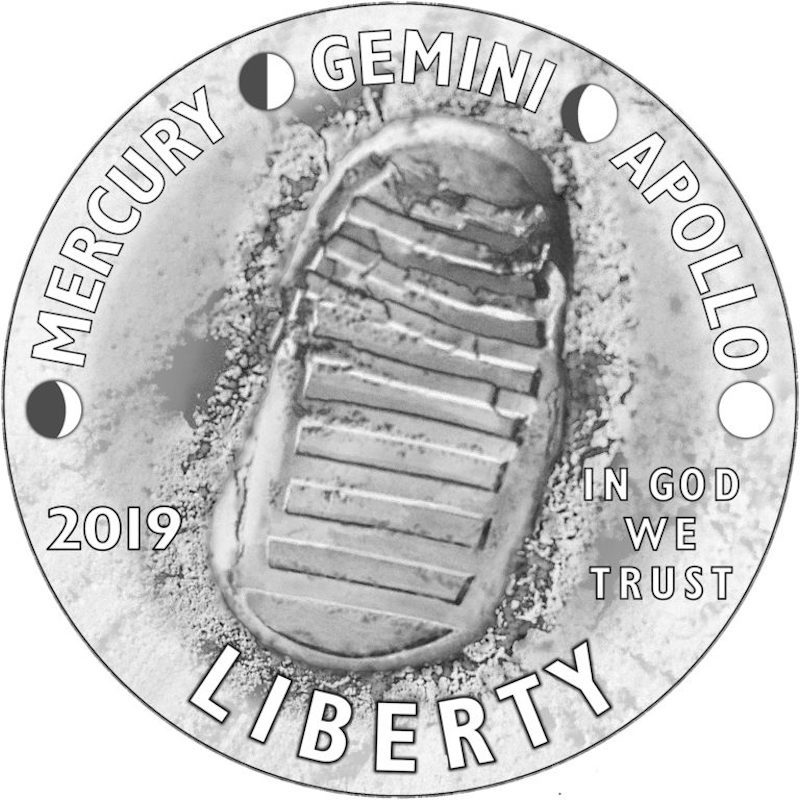
-
Obverse design of the Apollo 11 50th Anniversary Commemorative Coin program
-
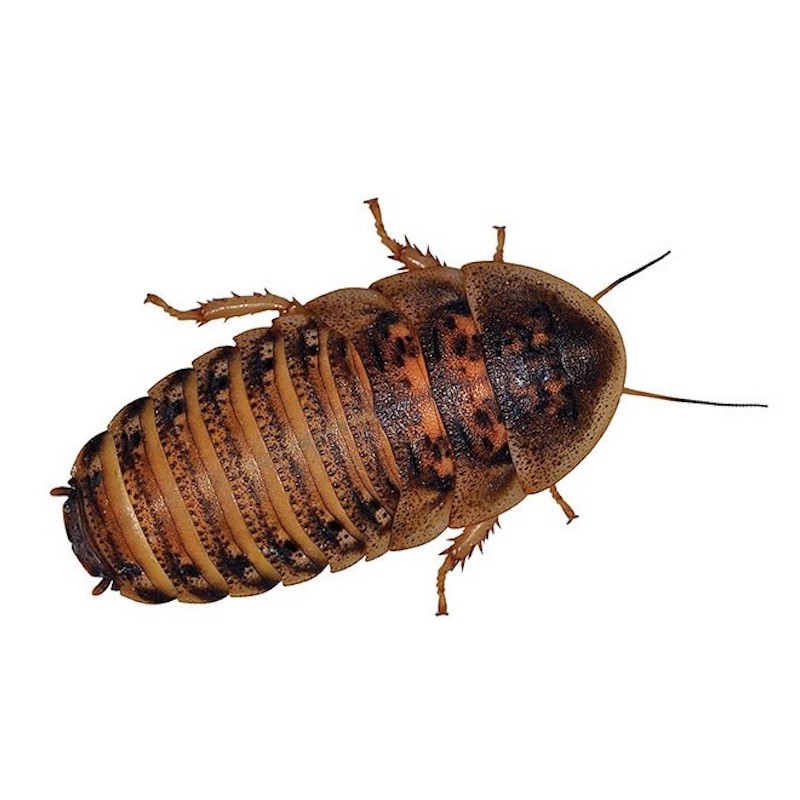
-
A Dubia Roach (Blaptica dubia)
I understand that with the resignation of Kareem Abdul-Jabbar from the CCAC that this august body may be lacking the appropriate point of reference that Abdul-Jabbar and I have to make the tie between the bootprint and an insect that could probably survive on the moon (he was born Lew Alcindor in New York City). Then again, the CCAC is the same organization, albeit, with different members, that gave us some of the worst designs in modern coinage.
For the 50th anniversary of one of the greatest achievements of the 20th century, all the CCAC could come up with is a bootprint?
Jan 20, 2017 | CCAC, news
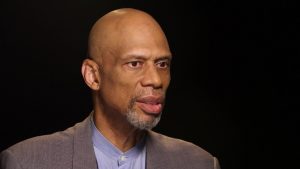
Kareem Abdul-Jabbar
Born on New York City as Ferdinand Lewis Alcindor, Jr., his physical growth and natural basketball abilities outpaced everyone. Playing for Power Memorial in the New York City Catholic League, lead his team to three straight championships while compiling school records in points and a 71-game winning streak. While Alcindor played for Power Memorial they had a 79-2 record.
He was recruited by the legendary John Wooden, Alcindor played his first year on the UCLA freshman team during a period when freshmen were not allowed to play on the varsity team After leading the freshman team in points, his scoring prowess helps lead the Bruins to three NCAA championships (1967, 1968, and 1969) while being twice named Player of the Year. Alcindor earned a Bachelor of Arts in History before being drafted by the Milwaukee Bucks of the NBA and New York Nets of the ABA.
After declining a $1 million offer to play for the Harlem Globetrotters, his unusual negotiation landed him in Milwaukee as the first pick of the 1969 NBA Draft. He was an instant star ending the season second in scoring and third in rebounding while being named NBA Rookie of the Year. The next year the Bucks acquired All-Star guard Oscar Robertson that helped lead the Bucks to the NBA Championship. Alcindor led the league in scoring, points, and rebounds earning the NBA Most Valuable Player award and was named MVP of the finals.
Following the end of the finals in 1971, he announced he adopted the Muslim name of Kareem Abdul-Jabbar. Abdul-Jabbar converted to Islam while a student at UCLA.
Although he loved Milwaukee, he felt the midwest did not fit his cultural needs. After requesting a trade to New York or Los Angeles, he was traded to the Lakers for the 1975-76 season where he played 14 seasons of dominating basketball.
Even if you are not a fan of Kareem Abdul-Jabbar or the teams he played for (says this New York Knicks fan who grew up a New York Nets fan when they played on Long Island), you had to admire his ability to rise to any challenge. Even when a young Bill Walton and his Portland Trail Blazers swept the injury-plagued Abdul-Jabbar and the Lakers, he did enough to not make the games easy for the Trail Blazers.
Although being 7-foot-2 was an advantage, Abdul-Jabbar was not a physical center like many of his contemporaries. He was more nimble and moved more like a forward than a center. But he used it to his advantage by creating the nearly impossible to defend skyhook that he could shoot with either hand. If given the ball on either side of the foul line with room to maneuver, Abdul-Jabbar did not even need a dribble, one step and he was in position with his outer arm stretched to hook the ball over the defenders. And because of his height, the ball was always on a downward projection making blocks by the opposition called as goaltending.
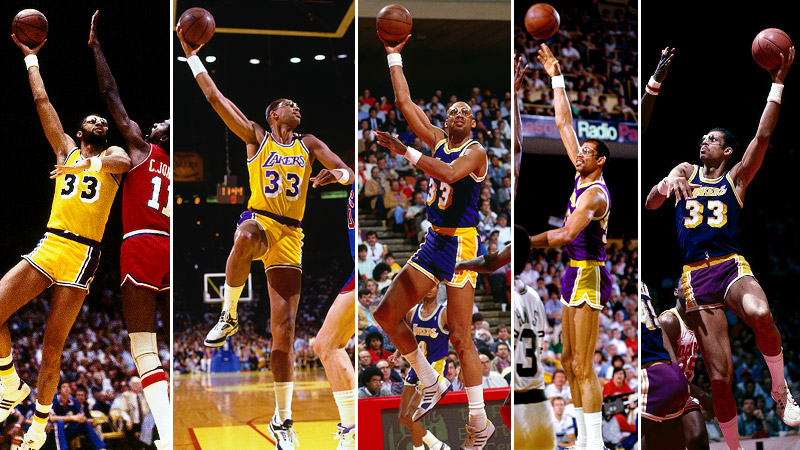
The Skyhook was considered the most deadly shot in the NBA. Nobody could defend against it!
Even as he was aging, I was able to see Abdul-Jabbar in Madison Square Garden against a younger Patrick Ewing. Even though Ewing was 2-inches shorter, he had a bigger body and was a more physical player. That did not stop Abdul-Jabbar from frustrating the younger Ewing to lead the Lakers in points. By my recollection, their record was 1-1 watching the matchup between the two at The Garden.
I could go on because it is easy to talk about the basketball prowess of a player who was like no other in NBA history. But he was more than a basketball player.
Abdul-Jabbar is a lover of history. His ability to travel and worldview has provided him a unique perspective regarding how the world works around him. In interviews, Abdul-Jabbar will recognize the evolution of contemporary history but also understand why that evolution has taken the course it has. Over the last few years, Abdul-Jabbar has been criticized by all sides over recent events where he has criticized both the police and the Black Lives Matter groups noting where both sides have misread the history and using the wrong lessons to understand how to make a better future.
 He founded the Skyhook Foundation whose mission statement is to “Give kids a shot.” The primary program of the Skyhook Foundation is Camp Skyhook, where each week eighty-five 4th and 5th graders are immersed in a hands-on outdoor program staffed by the Los Angeles Unified School District that engages our young people in science, technology engineering, and mathematics (STEM) programs.
He founded the Skyhook Foundation whose mission statement is to “Give kids a shot.” The primary program of the Skyhook Foundation is Camp Skyhook, where each week eighty-five 4th and 5th graders are immersed in a hands-on outdoor program staffed by the Los Angeles Unified School District that engages our young people in science, technology engineering, and mathematics (STEM) programs.
Like many of you, I did not know Abdul-Jabbar was a numismatist. It is not surprising given his talents and intelligence.
After all his accomplishments, Kareem Abdul-Jabbar (69) can now add being the most famous person ever to be appointed to the CCAC and the tallest person to serve to his very long list of accomplishments. What is really going to be cool is being able to meet him at one of the shows the CCAC will participate!
Yes, I just geeked-out over the a sports star!
Credits
- Portrait of Kareem Abdul-Jabbar Courtesy of CNN Money
- Getty Image composite of the Skyhook courtesy of ESPN.
- Camp Skyhook logo courtesy of the Skyhook Foundation.
Jun 17, 2016 | CCAC, CFA, coin design, coins, history, national park quarters
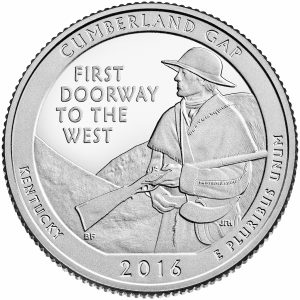
Revere of the 2016 Cumberland Gap Quarter
The artistic error was found by a member of my local coin club who also participates in re-enactments from the Revolutionary War era. Since he is acquainted with the how items from that period look, he told fellow club members about his find.
While looking at the quarter celebrating the Cumberland Gap National Historical Park in Kentucky he noticed something was wrong. A careful examination of the gun shows the flintlock is mounted on the wrong side.
During that time, since most people were right-handed or learned to shoot with their right hand on the trigger, the flintlocks were placed on the right side of the stock. Doing so allowed the flash created by striking the flint to be guided away from the shooter. If the flintlock was placed on the left, the flash would fire into the shooter causing injury.
Manufacturing technology was very different prior to the industrial revolution. Parts were either case manually with molds or formed one at a time where speed was important, especially to satisfy a government’s order to arm soldiers. It would be impractical to alter the basic mechanism for the majority of guns made. Left-handed guns were custom projects that only the wealthy could afford. A frontiersman would not be the type with the means to purchase a custom made gun with a left-handed flintlock.
-

-
Closeup on the backwards flintlock on the Cumberland Gap Quarter
-
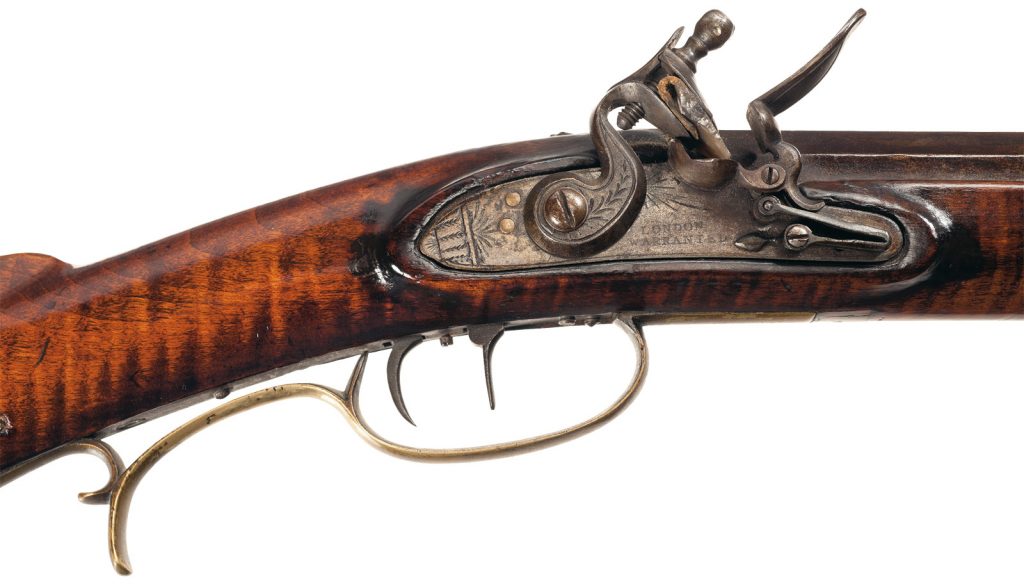
-
Closeup on the flintlock of an M. Martin Flintlock Kentucky Rifle
Further, look how the frontiersman is holding the gun. He is not cradling the gun with the trigger nearby so that he can fire if necessary. The butt, or stock of the gun is extended forward and the barrel pointed backward. Someone suggested that the perspective on the flat coin may make this look different but think about it, how would you hold the gun if you were standing on a ridge looking westward over an untamed landscape?
Although I did not have the eye or knowledge to pick up on this mistake, surely one of the specialists on the CCAC especially the one appointed to the commission who is a specialist in American history. I do not expect much out of the CFA since their specialties are not really fine arts since the majority of their work deals with the aesthetics of buildings, facades, and fencing around the District of Columbia.
There are 11 members of the CCAC and seven in the CFA and not one of them noticed any problems with this image? If they are allowing historically inaccurate images on United States coinage, then what is their purpose?
Sep 29, 2015 | CCAC, coins, commemorative, job, US Mint
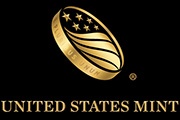 Are you a numismatist with training, education or experience? Do you want to be part of the decisions making process in the design of new coins and medals? Can you do this with no compensation, minimal reimbursement, and make decisions with people looking and criticizing your decisions? Then do I have a job for you!
Are you a numismatist with training, education or experience? Do you want to be part of the decisions making process in the design of new coins and medals? Can you do this with no compensation, minimal reimbursement, and make decisions with people looking and criticizing your decisions? Then do I have a job for you!
The Citizens Coinage Advisory Committee is looking for a member who is specially qualified in numismatics to fill one of its 11 seats. As one of the 11 members, you will provide one of the many inputs on themes and designs for circulating and bullion coinage, commemorative coins, Congressional Gold Medals, and other medals produced by the U.S. Mint. The other inputs will be the Commission of Fine Arts and the special interest organizations that has the ear of the decision makers including whomever is running the U.S. Mint and the Secretary of the Treasury.
Appointments to the CCAC are for four-year term and are classified as Special Government Employees who are subject to conflict of interest laws and ethics regulations. At the end of the four-year term you can be re-appointed as long as your application is approved.
If you want to be considered to be part of this sausage making process, should submit a resume, along with a cover letter, detailing specific educational credentials, skills, talents, and experience. Applications may be submitted by email to info@ccac.gov, by fax to 202-756-6525, or by snail mail to: United States Mint, 801 9th Street NW, Washington, DC 20220, Attn: Greg Weinman. Submissions must be postmarked no later than Friday, October 9, 2015.
Oct 31, 2014 | ANA, CCAC, coin design, coins, commemorative, commentary, gold, halves, medals, policy, silver, US Mint
 It has been a few years since I did an All-Hallows-Eve numismatic trick-or-treat that it seems like a good time to do add one. Here are my numismatic tricks and treats for this past year.
It has been a few years since I did an All-Hallows-Eve numismatic trick-or-treat that it seems like a good time to do add one. Here are my numismatic tricks and treats for this past year.
Girl Scouts need a values adustment
TRICK: It was announced in January that the 2013 Girl Scouts commemorative coin did not generate enough sales for the U.S. Mint to provide a payout of seignorage. This is the first time this has happened. Part of the problem was that the Girl Scouts are stuck in the 1950s mindset that does not see collecting coins as a girl’s hobby. Although values are important, this shows that he Girl Scouts’ values are behind the times and will not be the catalyst behind helping expand the hobby. They should be ashamed for contributing to this failure.
ANA Willfully Gives up its Premier Status
TRICK:The Professional Numismatists Guild and the American Numismatic Association announced in January that “the first” PNG-ANA Numismatic Trade Show the weekend prior to the 2014 World’s Fair of Money in Rosemont that it will be open to the public. While making it sound exciting it made the entire show 8-days long. This was a bad move because of the length and because it makes the ANA play second to PNG. If the ANA wants to be the premier numismatic organization, the one that anyone wanting to learn about and be about numismatics, The ANA should not play second fiddle to any other organization.
There are coin treats!
TREAT:In creating a tribute to the 50th anniversary of the Kenney half-dollar, the U.S. Mint has made a coin that is not really circulated into something interesting for the collector. The dual-dated gold coin became an instant hit before the price of gold dropped and the silver sets are reportedly selling well. This was a good move by the U.S. Mint.
TREAT:For the most part, commemorative coins are sales do not meet expectation. While there are a few exceptions like 2005 Marine Corps 230th Anniversary silver dollar, most commemoratives do not come close to their maximum mintage. But the 2014 National Baseball Hall of Fame commemoratives appear to have hit a home run. The combination of the subject and the curve of the coin may be a significant factor in the coin’s success. The $5 gold and silver dollar coins are both sold out. There are some of the clad half-dollars available.
TREAT:Speaking of cool stories, what about the Saddle Ridge Hoard? After a couple found the hoard of gold coins while walking their dog, it spawned an interest in metal detectors and searching for buried treasure. It was such an amazing story that it even found its way into the national news cycle. But like everything else, another shiny story diverted the media’s attention and the coins went on sale to the general public on Amazon.com.
Not all coins are treats
TRICK: Colored and coins with gimmicks are proliferating in the market. So far, the U.S. Mint and the Royal Mint are resisting colored and other gimmicks while the Royal Candian Mint and New Zealand Mint are at a race to the bottom for gimmick coins.
Numsimatics and technology
TREAT: The ANA launched its new website with new technology ready for growth on time and under budget. This is the website that ANA Governor Laura Sperber said, “I can’t wait to see what a disaster the ANA new web site will be.” So far, there has not been a follow up from Sperber while the new site has been a success.
TREAT: More recently, the U.S. Mint had a great launch to their new website. After years of frustration with the online ordering of what would be popular items, the new site handled the launch of the 50th Anniversary Kennedy 2014 Half-Dollar Silver Coin Collection with no issues.
Failure to launch
TRICK: The U.S. Mint launched the Baseball Hall of Fame commemorative coin at the Whitman Show in March not anticipating its popularity with fewer coins that there was a demand. It was as if the U.S. Mint had a blind spot with how popular this coin would be.
TRICK: The dealers who paid less than desireable people uninterested in anything other than a quick buck to mob the lines at the Denver Mint and the World’s Fair of Money. I continue to belive that their ethics must be questioned and appropriate actions taken by the ANA even though I do not think that will happen.
TREAT: With the drop in the price of gold, the current price of the gold Kennedy half-dollar tribute is less than what is was at launch. Teach these greedy dealers a lesson and buy the coins for less directly from the U.S. Mint!
U.S. Government hands out coal
TRICK: Because the U.S. Mint can only do what the laws that congress pass tells them they can do and congress is so dysfunctional they cannot even pass laws for issues they agree on, the United States was the only country involved with the Allies on D-Day NOT to issued a commemorative to honor the 70th anniversary of D-Day.
TRICK: In the name of political correctness, the State Department’s Cultural Property Advisory Committee (CPAC) continues to make it difficult for ancient coin collectors to participate in its hobby by allowing countries to ask the State Department to overreach on the enforcement on the Cultural Property Implementation Act. It is turning ancient coin collectors into criminals even for collecting common coins. Their actions are rediculous.
CCAC is the CCAC
TREAT: The Citizens Coinage Advisory Committee suggested creating American Arts medals that will feature the artistic ability of the U.S. Mint’s artist.
TRICK: The arts medals are medals, not coins. Even with the beauty of medals like the 9/11 silver medal, it did not sell like coins would. In fact, it grossly under performed without raising significant sums for the 9/11 Memorial at the site of the Twin Towers in New York. But this is what the CCAC is face with because of congressional dysfunction (see above).
So goodbye everybody, and remember the terrible lesson you learned tonight. That grinning, glowing, globular invader of your living room is an inhabitant of the pumpkin patch, and if your doorbell rings and nobody’s there, that was no Martian… it’s Hallowe’en.
— Orson Welles, The War of the Worlds, CBS Radio, October 30, 1938

Hobo Ike and Jefferson courtesy of Darth Morgan posted at
Coin CommunityOct 16, 2014 | CCAC, coins, First Spouse, gold, news, US Mint

The obverse design selected by the CCAC for the Jacqueline Kennedy First Spouse Gold Coin
For Kennedy, in addition to being renown, the release of the 2014 50th Anniversary Kennedy Half-Dollar Gold Proof Coin may cause a sharp increase in demand from customers seeking to make special Kennedy gold sets using both the 2014 50th Anniversary Kennedy Half-Dollar Gold Proof Coin and the 2015 Jacqueline Kennedy First Spouse Gold Proof Coin. To account for this potential variable, we believe a maximum issuance of 30,000 coins would allow flexibility to increase production should customer demand exceed forecasted sales volumes for the other designs. These maximum mintage limits will be divided between coins with proof and uncirculated finishes based on consumer demand.
The Mint is not obligated to mint, and will not mint, to the maximum mintage limits unless it is supported by public demand. The production process and maximum mintages give us flexibility should there be a surge in demand over previous years.
Jul 26, 2014 | CCAC, commentary, medals, silver

Proposed reverse for the 2015 Ultra High Relief gold coin
These are fair criticisms. I did not attend the April meeting and Chairman Marks provided good introductory explanations prior to the discussion. Before commenting, I should have looked at the previous meeting’s notes which are available on the CCAC website. In retrospect, my criticism about the program was probably not fair. However, it is fair to question the direction the CCAC is proposing.
The other criticism that I will alter but not retract is the one when I said there was an “over-the-top cult-like patriotic gushing by some of the members over the proceedings.” Rather, what I should have said is that the CCAC was very full of themselves to the point of being too self-congratulatory and overblowing the self-perceived importance of what is being proposed.
What is being proposed is a medals program that Marks tentatively called an “American Liberty Silver Medal Program.” The purpose would be for the U.S. Mint to produce modern images of Liberty in medal form. Medals produced under this program would be dated silver proof medals on similar one-ounce planchets that are used for the American Silver Eagle program.
A second program would be a “freestyle medal of an American theme.” The U.S. Mint would solicit ideas from their artist/engravers to be reviewed by the CCAC. One freestyle medal would be produced each year. As part of the proposal, it was suggested that the medals also be produced in bronze to make them more accessible to the average collector.
What is important is that these are proposals for medals and not coins. Medals can be made of any metal and be dated but they will not bear a denomination and would not be legal tender.
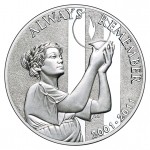
2011 9/11 National Medal (obverse)
What prevented the sales of the September 11 National Medal? It cannot be the design because most people believe it is one of the best medals ever to be produced by the U.S. Mint. Could it be the price? The medal was priced at $66 with a $10 premium to be paid to the museum. This was $10 more than price for the proof American Silver Eagle coin.
Although the September 11 National Medal was a beautiful work of art the price was not too out of line for a silver medal, the fact that it was a medal and not a coin most likely prevented it from being purchased in greater numbers. Even though a commemorative coin will not enter circulation, there may be a psychological barrier from a medal being accepted by collectors because it is not a legal tender coin.
I did not purchase one of these medals. Even though $10 would go to the museum, I opted to write a check as a donation rather than pay for the medal. Even though I like the design, the medal is not something I feel is right for my collection. In writing a check I was also able to use the donation as a charitable tax deduction, which I would not be allowed to do if I purchased the medal. I also do not have this piece of metal that might not resell with a numismatic premium when it comes time to divest my collection.
Reflecting on the meeting and the proposal, those that I corresponded with and I expressed a lot of skepticism that this program would be a success. Regardless of how beautiful the artwork, many believe these medals will not be as popular with the public as portrayed by the CCAC during the meeting.
In fact, if you listened to what members of the CCAC said, you would think that these medals would be the best thing to come out of the U.S. Mint since President Theodore Roosevelt’s “pet crime.” While I really do not want to assail Gary Marks, his remarks at the end of the meeting exemplify this extreme self-ingratiation:
I believe that this is the single most impactful idea that the mint can pursue at this point in time in the United States. With a medals programs such as this, finally, we can have the freedom to have the art come forward. Finally, liberty will be liberated
The committee is energized.
Overall, the CCAC was overly self-congratulatory for doing something that will arguably have the least impact on the collecting community. It was these types of statements from the members of the CCAC that prompted my comments on Tuesday.
Images courtesy of the U.S. Mint.
Jul 22, 2014 | CCAC, coins, Eagles, gold, medals, silver, US Mint

Proposed reverse for the 2015 Ultra High Relief gold coin
Along with the gold coin will be a companion silver coin struck on the one-ounce planchet that is used for the American Silver Eagle. Although it was not specifically addressed, it is assumed that silver coin will be of the same or similar relief of the gold coin.
This afternoon I was able to break away from my daily activities to attend the CCAC meeting via conference call. This is the first time I attended one of their meetings and came away a little surprised and a little appalled.
What surprised me with the meeting is how in lock-step the committee is on everything. There appears to be no disagreement or questioning of what the U.S. Mint had proposed. Granted the committee members may have history with the issues beyond this meeting, but I was surprised that alternatives were not recommended or discussed.
The committee was excited because the proposal was somewhat in alignment with a motion they passed last April to create a Liberty Medal series. According to Gary Marks, chairman of the CCAC, the Liberty Medal Series would be an arts medal produced by the U.S. Mint to foster new design and innovation. It is to encourage the artists to have artistic impression beyond what they are allowed to do as part of the coin programs.
I do not know if it was previously discussed but according to the authorizing law for the American Silver Eagle bullion program (31 U.S.C. § 5112(e)(3)) the coins must have a design “symbolic of Liberty on the obverse side” and “of an eagle on the reverse side.” The law does not say that the obverse must be Adolph Weinman’s Walking Liberty design and it does not say that the reverse must be a heraldic eagle. Why has the committee not considered using the existing American Silver Eagle program to create a Liberty design program?
In discussing the overall medallic arts program, the CCAC decided to create a study group to come up with a plan to recommend to the U.S. Mint. Aside from the “American Liberty Silver Medal Program,” as described by Marks, he also proposed Freestyle Medal of an American theme. This would be one medal per year that would be artistic representations.
CCAC Member Heidi Wastweet said that the arts medal will allow for experimenting; allow the artist and designers to “expanding our wings” for future projects. As a result, it will let future stakeholders know what is possible so that it would inspire better designs.
While a medals program is a good idea, what seems to be missing is the subject matter. If the Liberty design can be leverage through the American Eagle bullion program, why not have medals used to honor history? Why is it when nations around the world issued commemorative coins honoring D-Day, the United States, whose mint is overly regulated by intransigent politicians, did not issue any commemorative item on the 70th anniversary of an event that changed world history?
Expanding the medals program in this manner would be the perfect way to honor history when congress has failed to remember they represent a country rather their owners… I mean donors!
Where I was appalled was what I saw as over-the-top cult-like patriotic gushing by some of the members over the proceedings. I thought the CCAC was supposed to be an oversight organization; at least that is how it appears to be described in the authorizing law (31 U.S. Code § 5135). There should not be a problem with supporting the work of the U.S. Mint and support the artists whom everyone agrees should be treated better. However, there were some comments that sounded more like members were wrapping themselves in the flag rather than working on an oversight committee.
As part of his closing remarks, Chairman Marks said, “I believe that this is the single most impactful idea that the Mint can pursue at this point in time in the United States.” Unfortunately, I wish this was the case. It appears to be another missed opportunity by the CCAC similar to previous missed opportunities by this committee.
I will have more commentary in the coming days.
Background from the U.S. Mint
Potential Products
2015 24-karat Gold Ultra High Relief Coin
2015 Silver Medal
Background
- As a result of the success and popularity of the 2009 Ultra High Relief Double Eagle Gold Coin, the United States Mint (Mint) is considering producing a 2015 24-karat Gold Ultra High Relief (UHR) Coin.
- The CCAC recommended a new eagle design for the reverse of the American Eagle Silver One Ounce Coin, a change the Mint is not pursuing, opting instead to consider showcasing the beauty and intricacies of the recommended design on a 2015 24k Gold UHR Coin.
- To compliment such a reverse, the Mint would consider featuring a new, modern rendition of Liberty on the obverse of the 2015 24k Gold UHR Coin.
- If developed, a 2015 24k Gold UHR Coin would be comparable to the 2009 Ultra High Relief Double Eagle Gold Coin, in that it would also be one troy ounce. The denomination would also have to be determined.
- To make such a design accessible to various ranges of collectors, the Mint is considering the possibility of producing a medal, struck in silver, bearing the same design as a 2015 24k Gold UHR Coin. Striking these medals in silver would provide an additional opportunity to showcase the intricacy of the design features and the beauty of the artwork.
- If this concept is pursued, the United States Mint would seek Secretary of the Treasury approval to strike this gold coin under authority of 31 U.S.C. § 5112(i)(4)(C).
- If this concept is pursued, the United States Mint would seek Secretary of the Treasury approval to strike this silver medal under authority of 31 U.S.C. § 5111 (a)(2).
Design History
- In 2009, the United States Mint fulfilled the original vision of Augustus Saint-Gaudens with the release of the 2009 Ultra High Relief Double Eagle Gold Coin; closing one chapter of American coin design and beginning a new one.
- If produced, 2015 24k Gold UHR Coins could be viewed as a follow up to the 2009 Double Eagle UHR, contrasting classic American coin design with modern American coin design.
Image courtesy of the U.S. Mint.
Jul 21, 2014 | CCAC, coin design, coins, gold, medals, Peace, silver

2009 Ultra High Relief Double Eagle Gold Coin
“Discussion of a potential 2015 24K Gold Ultra-High Relief Coin and accompanying silver medal.”
In 2008, it became then Mint Director Edmund Moy’s “pet project” to create the ultra-high relief Augustus Saint-Gaudens double eagle design in a manner that Saint-Gaudens originally envisioned. The result was the 2009 Ultra High Relief Gold Coin. The design was based on the plaster casts originally made by Saint-Gaudens that was digitized and the equipment purchased that would be able to strike the coin.
Moy is no longer Director but the U.S. Mint still has the equipment used to strike the coin. The question is what does the U.S. Mint have in mind for creating a high-relief coin?
Also, what do they have in mind for an accompanying silver medal and how do they justify creating a medal? While the U.S. Mint can use the same law that authorizes the 24-Karat Gold Buffalo coin (31 U.S.C. § 5112(q)), it is uncertain what can be leverage for the silver medal. It is possible that the U.S. Mint might be leveraging 31 U.S.C. § 5111(a)(2) that says The Secretary of the Treasury “may prepare national medal dies and strike national and other medals if it does not interfere with regular minting operations but may not prepare private medal dies.” Before we pass further judgement we will wait to hear what the U.S. Mint says.
As for the subject, since they Saint-Gaudens double eagle design as been used, what other high-relief design has issues? The only design that comes to mind is the Anthony de Francisci Peace dollar. But not just the Peace dollar, but the original design with the broken sword.
The broken sword was not well received. According to numismatic researcher Roger Burdette, he discovered a editorial that appeared in the New York Herald that summarized the feeling about the broken sword:
A sword is broken when its owner has disgraced himself. It is broken when a battle is lost and breaking is the alternative to surrendering. A sword is broken when the man who wears it can no longer render allegiance to his sovereign. But America has not broken its sword. It has not been cashiered or beaten; it has not lost allegiance to itself. The blade is bright and keen and wholly dependable. It is regrettable that the artist should have made such an error in symbolism. The sword is emblematic of Justice as well as of Strength. Let not the world be deceived by this new dollar. The American effort to limit armament and to prevent war or at least reduce its horror does not mean that our sword is broken.
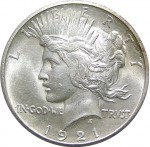
1921-D Peace Dollar
Although struck in Denver in late December 1921, the 1921-D Peace dollar was released into circulation on January 3, 1922.
Later that year it was determined that the high-relief design was causing dies to break at a faster pace than planned. The Mint then lowered the relief in order to keep striking coins at the rate required by law. This became the second type of the Peace dollar series.
Because 2015 will be 95 years since the first Peace dollar, I suspect that the high-relief gold coin will be a 2015 tribute to that first Peace dollar.

Artist’s conception of a 1964-D Peace dollar.
The striking of a dollar coin had a powerful ally: Senator Majority Leader Mike Mansfield, Democrat from Montana, whose state would be directly affected by the new coins. Although the numismatic press was not in favor of the measure because of its limited ability to solve the coin shortage, Mansfield pushed a bill through congress to authorize the Mint to strike 45 million silver dollars.
After much discussion, the Mint looked for working dies but found that few survived a 1937 destruction order. Those that did survive were in poor condition. Mint Assistant Engraver Frank Gasparro, who would later become the Mint’s 10th Chief Engraver, was authorized to create new dies of the Peace dollar with the “D” mintmark. Since the coins would mostly circulate in the west it was logical to strike them closest to the area of interest.
When the coins were announced, coin dealers immediately offered $7.50 per coin which would ensure that they would not circulate as intended. Everyone saw this as a poor use of Mint resources during a time of severe coin shortages. Adams announced that the pieces were trial strikes never intended for circulation and were later melted under reportedly heavy security.
There have been reports that some Peace dollars were struck using base metals (copper-nickel clad) as experimental pieces in 1970 in anticipation of the approval of the Eisenhower dollar. The same reports also presume these coins have been destroyed.
While we are speculating, the companion silver medal could be a modern tribute to the 1964-D Peace dollar by minting a 1915-D silver medal with the same design but without a denomination. It would be the same design but with out “ONE DOLLAR” struck on the reverse.
A high-relief 24-karat gold Peace dollar design and a silver version without the denomination. That’s my prediction, what’s yours?
2009 Ultra-High Relief image courtesy of the U.S. Mint
1921-D Peace dollar courtesy of the author.
Artists conception of the 1964-D Peace dollar courtesy of PCGS.
Oct 30, 2013 | CCAC, coin design, coins, commentary, Eagles, platinum
The buzz around the numismatics industry is the article that appeared on the front page of Coin World saying that the Citizens Coinage Advisory Committee rejected the U.S. Mint proposal to use classic coin designs as the basis for a new series of American Eagle Platinum Proof coins.
According to the article, CCAC Chairman Gary Marks commented, “My message is, ‘Let’s do something modern, something new.’”
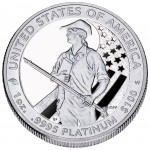
2012 American Eagle Platinum Proof reverse — “To Provide for the Common Defence”
Unlike other coin programs, the law governing the platinum bullion coins (31 U.S.C. §5112(k)) allows “The Secretary [to] mint and issue platinum bullion coins and proof platinum coins in accordance with such specifications, designs, varieties, quantities, denominations, and inscriptions as the Secretary, in the Secretary’s discretion, may prescribe from time to time.”
Now, The Secretary’s proxy, the management at the U.S. Mint, is proposing a series based on classical coins designs. Using charts showing declining coin sales, they claim that a study shows that “classic Eagle” and “classic coin” designs are popular amongst their customer.
The U.S. Mint may be reading too much into their studies.
First, any sales studies over the last four years have to be taken with a heavy dash of salt. As much as the economy affects their circulating coin programs it also affects the collector coin programs. Since coin collecting is not a necessity, expecting sales to do anything but decline during an economic downturn is naive.
The other problem with coin sales are the coins programs themselves. Rather than give the quarters programs a rest and come up with something different, congress, who decides what the U.S. Mint can do, passed the America’s Beautiful National Parks Quarter Dollar Coin Act of 2008 (Public Law 110-456) to overload our senses with yet another 10-year program. It was justified by noting the seigniorage of the 50 States Quarters program.
This leads to the crux of the problem: the tail wagging this dog are marketeers and bureaucrats rather than collectors and those concerned with how American coinage represents this country.

1928 Peace Dollar is a classic and under-appreciated design
A lot of people love the classic designs but on the classic coins. There comes a time to move forward and come up with something different and fresh. Although I have not agreed with some of the CCAC’s decisions, I agree with this decision.
When asked if there should be a theme to the design, CCAC member and medal sculptor Wendy Wastweet said, “No. The artists would be delighted to be free.”
Why not let the U.S. Mint artists have free reign to come up with new designs? They have proven that when allowed to use their talents they can create some of the best designs in the world.
The CCAC has been consistent in tell the U.S. Mint to get out of the way of the artists. In fact, the CCAC Blueprint Report released in February 2011 recommended better working conditions for the U.S. Mint’s artists and engravers while giving them a freer hand in using their talents for new coin designs.
In more than two years, the U.S. Mint has not changed allowing their marketing bureaucracy misread statistics in an attempt to fix a problem they continually demonstrate they have no understanding or insight. The CCAC is right to tell the U.S. Mint to come up with something better. In the process, if the marketing department would stand aside and let the artists be creative, I am reasonably certain these talented individuals will create something far more interesting than any marketeer, bureaucrat, or any member of congress.
American Eagle Platinum proof reverse courtesy of the U.S. Mint.




















